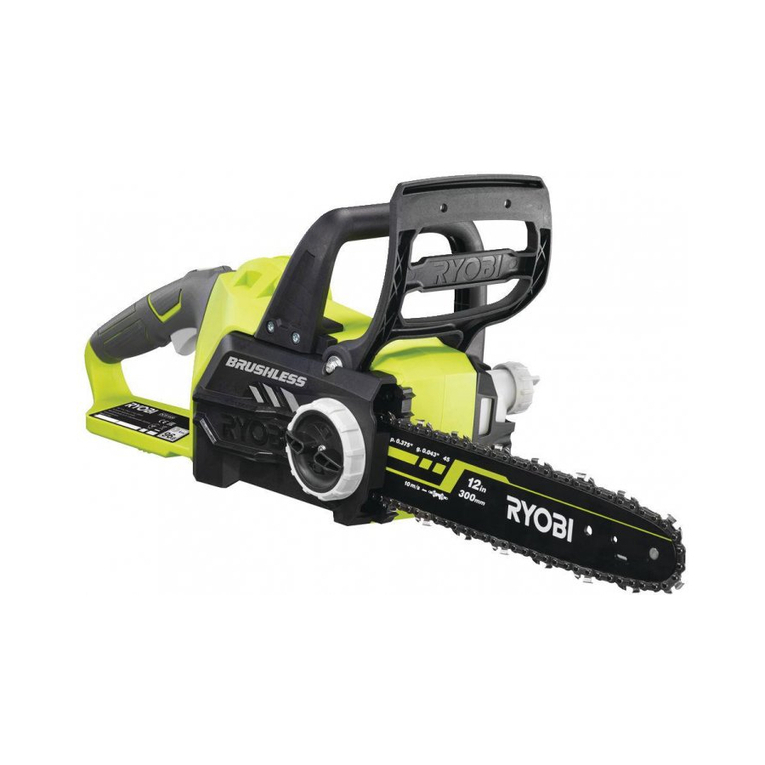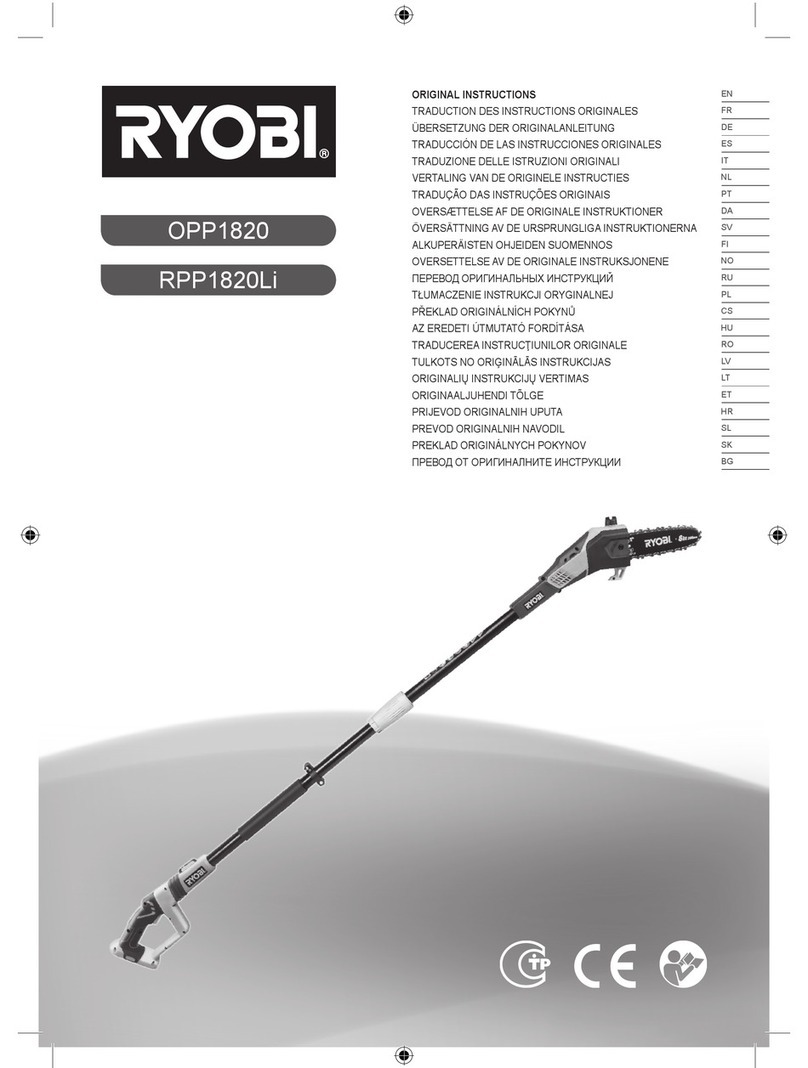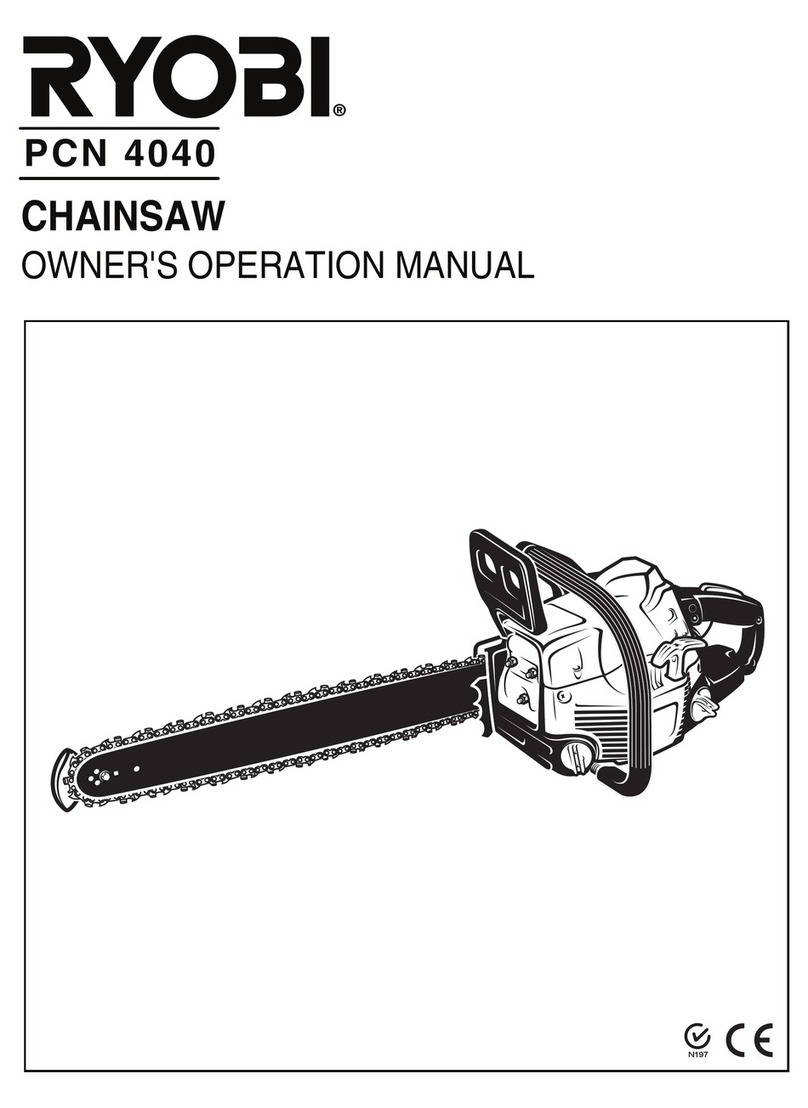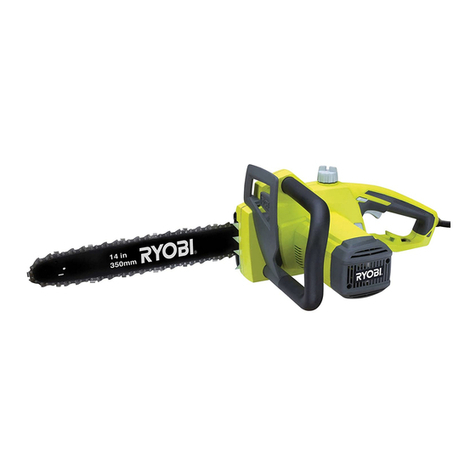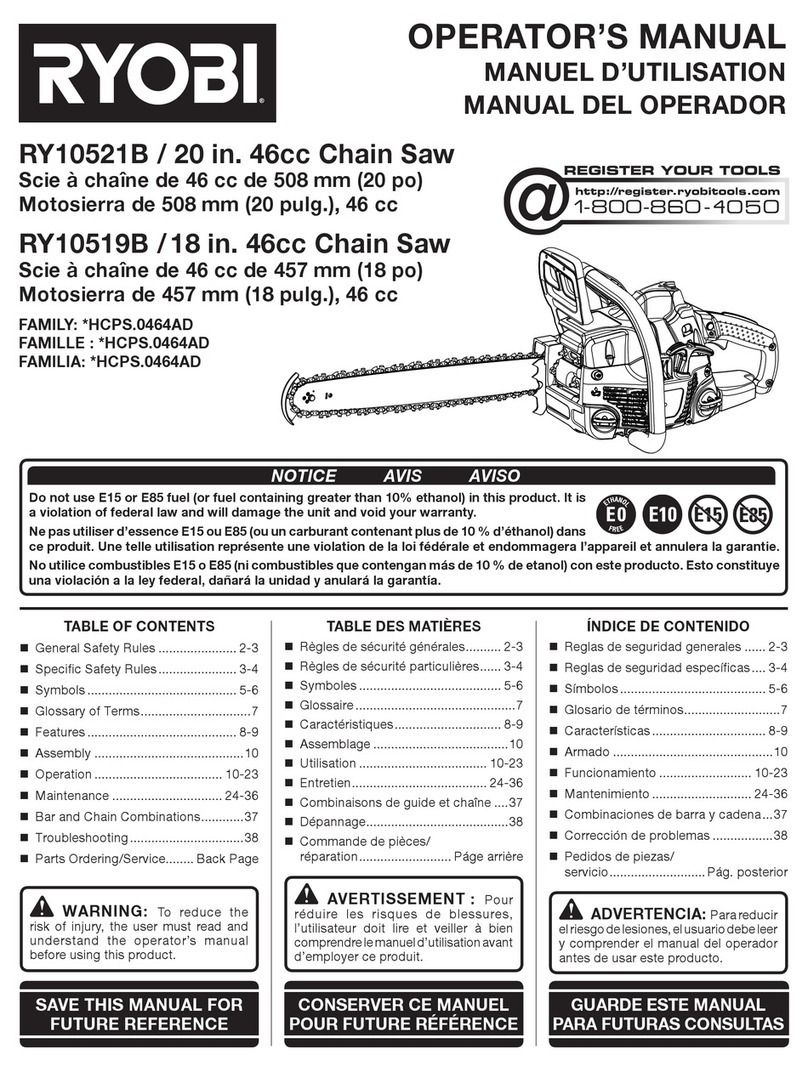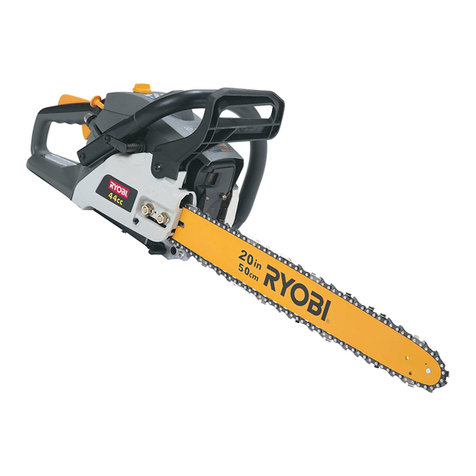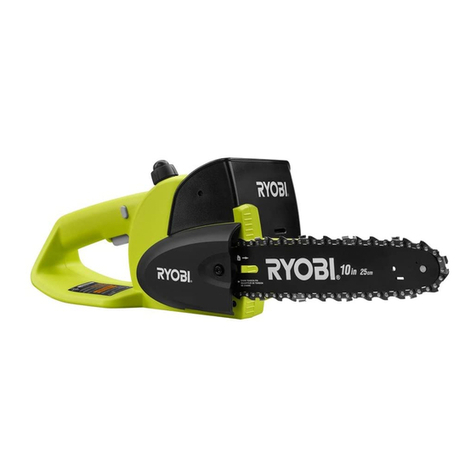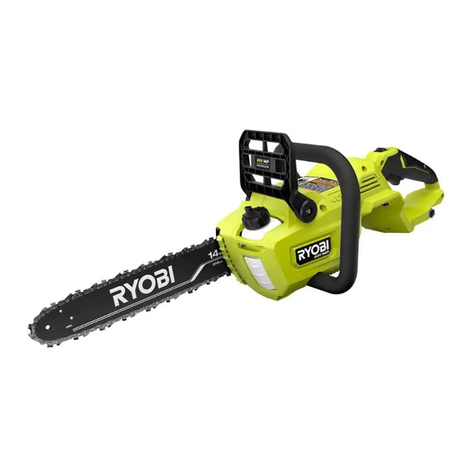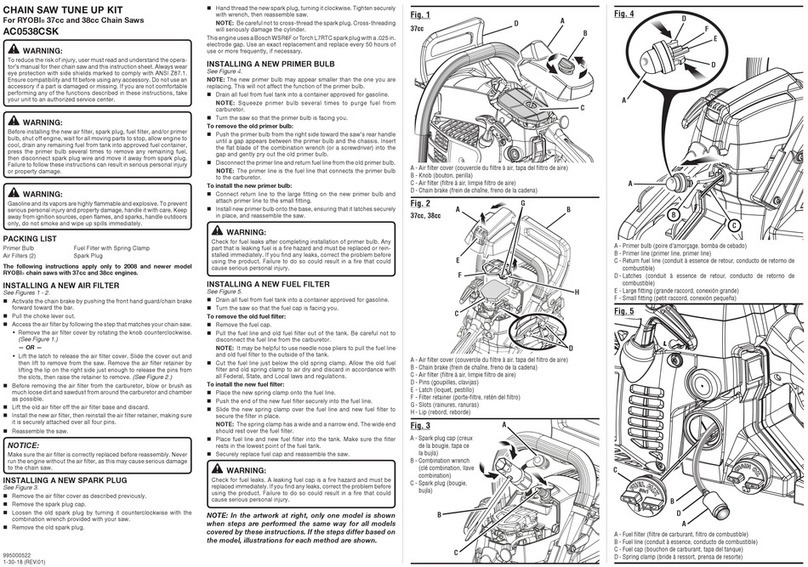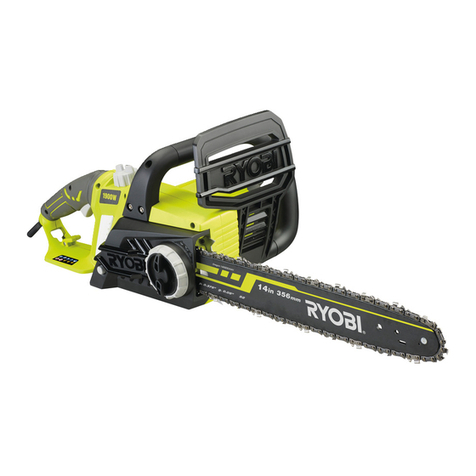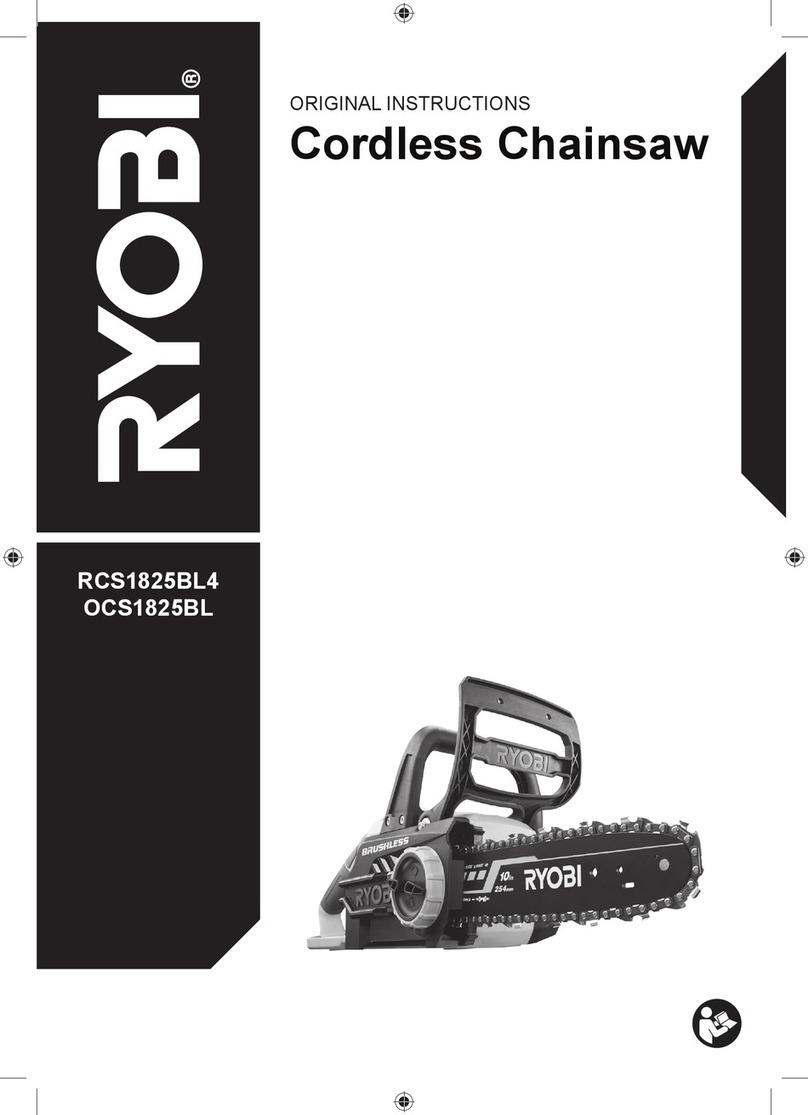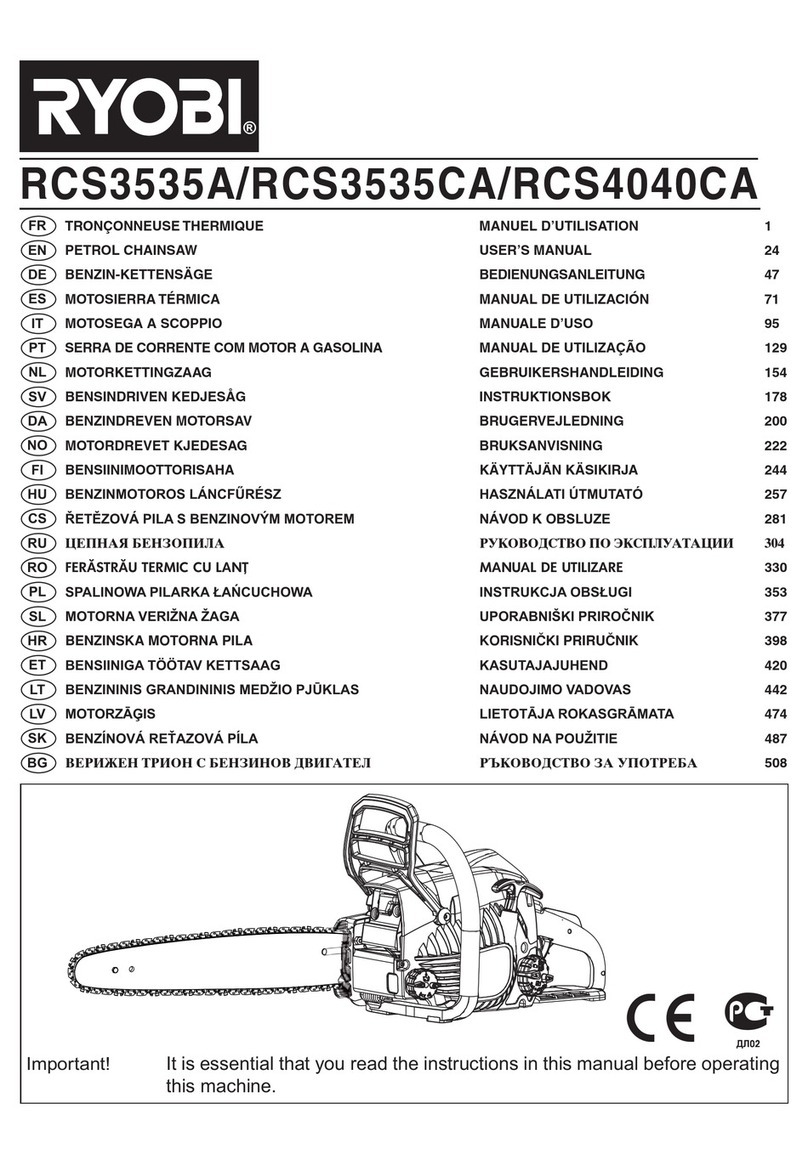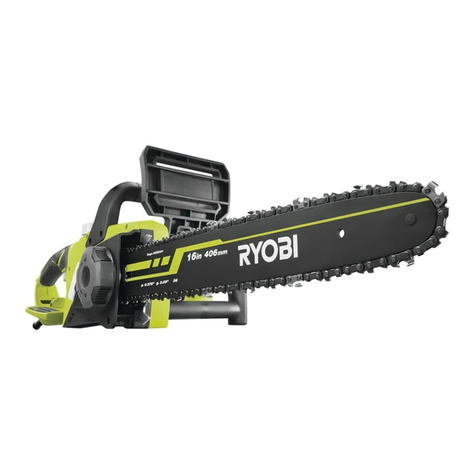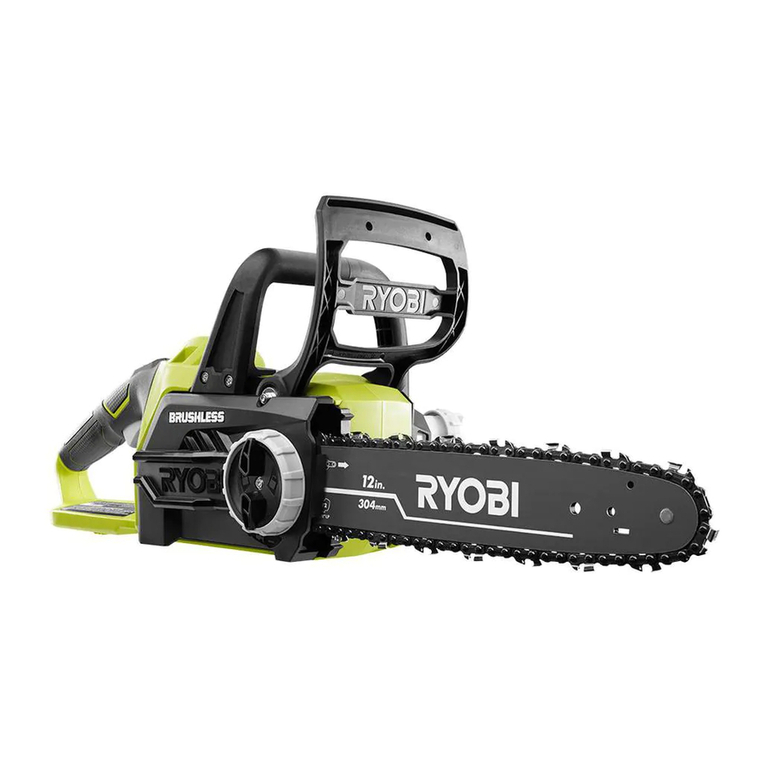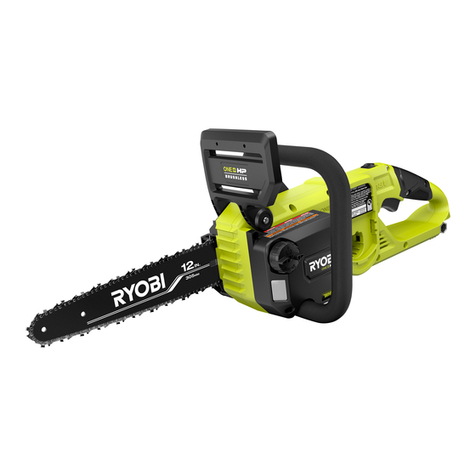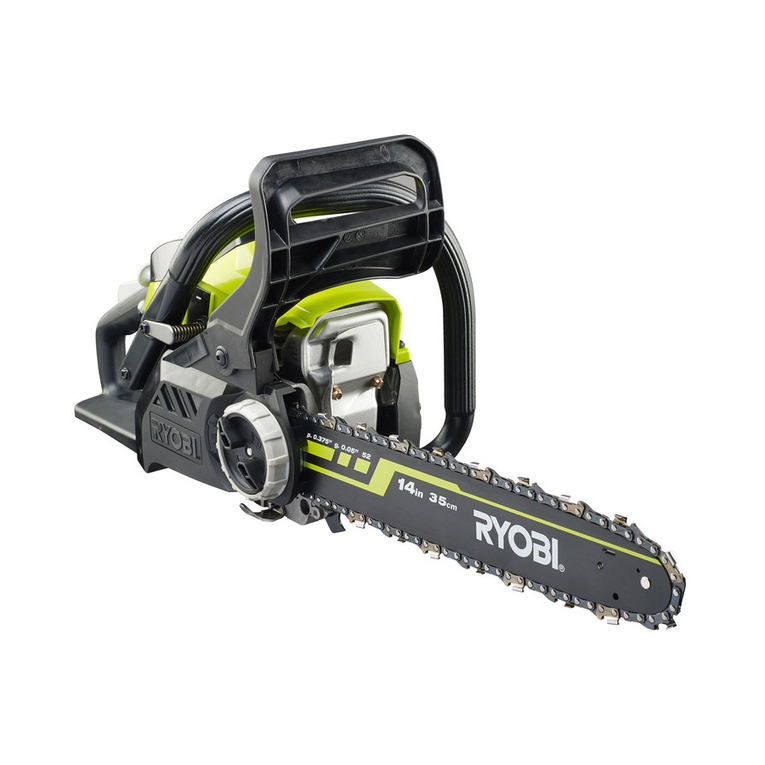
2
English (Original Instructions)
the risk of cut injuries,wear pants or chaps that
contain pads of cut retardant material. Never wear
scarves,ties,jewellery or other items of clothing,which
might get caught in the equipment, in brush or on
branches. Secure hair so it is above shoulder.
■Wear safety boots with a good tread (with non-slip
soles).
■Wear non-slip, heavy-duty protective gloves.
■Wear eye protection with side shields marked to
comply with EN 166 as well as hearing and head
protection when operating the product.
REFUELLING (DO NOT SMOKE!)
■To reduce the risk of fire and burn injury, handle fuel
with care. It is highly flammable.
■Mix and store fuel in a container approved for petrol.
■Mix fuel outdoors where there are no sparks or flames.
■Select bare ground, stop the engine, and allow it to
cool before refuelling.
■Loosen the fuel cap slowly to release pressure and to
keep fuel from escaping around the cap.
■Tighten the fuel cap securely after refuelling.
■Wipe spilled fuel from the unit. Move 9 m away from
refuelling site before starting engine.
■Never attempt to burn off spilled fuel under any
circumstances.
BASIC PRECAUTIONS IN THE CUTTING/WORK AREA
■Do not stand on any unstable surface while using your
chainsaw, that includes ladders, scaffolds, trees, etc.
■Do not start cutting until you have a clear work area,
secure footing, and a planned retreat path from the
falling tree.
■Do not cut from a ladder, this is extremely dangerous.
■Use extreme caution when cutting small-size brush
and saplings because slender material may catch the
saw chain and be whipped toward you or pull you off
balance.
■When cutting a limb under tension, be alert for spring-
back so that you will not be struck when the tension in
the wood fibres is released.
■Do not operate a chainsaw in a tree unless you have
been specifically trained to do so.
■Beware of the emission of exhaust gases, lubricant
mist and saw dust.
■This product is very noisy when operating, to prevent
long term hearing damage, wear hearing protection
and keep other persons 15 m away from the work
area. Operating similar tools nearby increases risk of
injury. Take frequent breaks.
■Use of hearing protection reduces the ability to hear
warnings (shouts or alarms). The operator must pay
extra attention to what is going on in the work area.
■Keep bystanders and animals out of the work area. Do
not allow other persons to be nearby during starting or
cutting with the chainsaw.
NOTE: The size of the work area depends on the job being
performed as well as the size of the tree or work piece
involved. For example, felling a tree requires a larger work
area than making other cuts, i.e., bucking cuts etc.
PUSH AND PULL
The reaction force is always opposite to the direction the
chain is moving. Thus, the operator must be ready to
control the pull when cutting on the bottom edge of the bar
and the push when cutting along the top edge.
NOTE: Your chainsaw has been fully factory tested. It is
normal to nd some slight lubricant residue on the saw.
MAINTENANCE PRECAUTIONS
■Never operate a chainsaw that is damaged, improperly
adjusted, or is not completely and securely assembled.
■Be sure that the saw chain stops moving when the
throttle control trigger is released. If the saw chain
moves at idling speed, the carburettor may need
adjusting. Refer to “Operation-adjusting idling speed”
later in this manual. If the saw chain still moves at
idling speed after adjustment has been made, contact
a service dealer for adjustment and discontinue use
until the repair is made.
■Keep the handles dry, clean, and free of lubricant or
fuel mixture.
■Follow the sharpening and maintenance instructions
for the saw chain.
■Use only the replacement guide bars and low kickback
chains specified for your saw. You must never modify
or remove parts from this product or use parts not
recommended by Ryobi. This will increase the risk of
injury.
WARNING
The risk of kickback may increase if non-approved
guide bar and chain combinations are used. Refer to
specications table for qualied replacement guide bar
and chain combinations.
WARNING
All chainsaw service, other than the items in the
operator’s manual maintenance instructions, should be
performed by competent chainsaw service personnel.
If improper tools are used to remove the ywheel or
clutch, or if an improper tool is used to hold the ywheel
in order to remove the clutch, structural damage to the
ywheel could occur which could subsequently cause
the ywheel to burst and serious injury could result.
